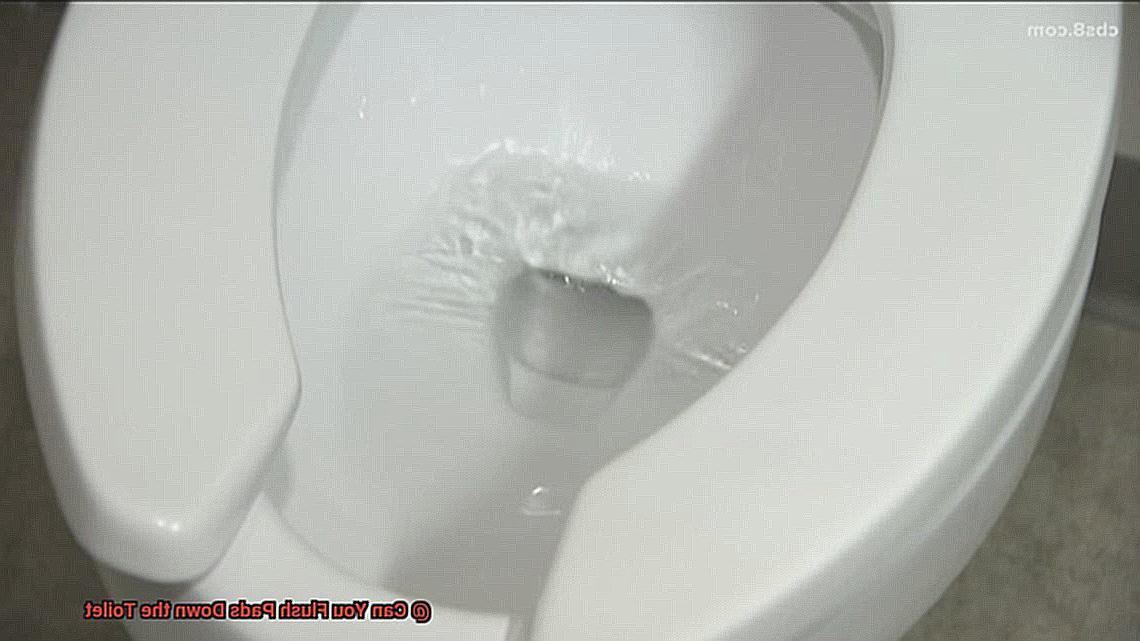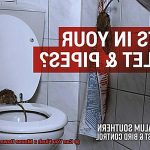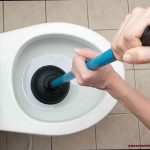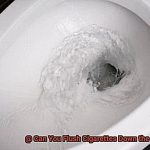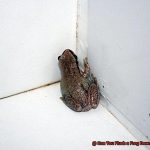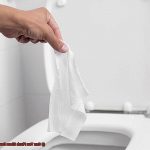Are you tired of the hassle that comes with disposing of your sanitary pads? Do you find yourself tempted to just flush them down the toilet? You’re not alone. Many women face this dilemma every month, but the truth is, flushing pads down the toilet can cause major plumbing and environmental problems.
Let’s start with the fact that pads are designed to absorb water and expand. This means that flushing them down the toilet can lead to significant blockages in your plumbing system. Not only that, but flushing pads also contributes to already-overburdened sewage systems.
In this blog post, we’ll explore why it’s never safe or acceptable to flush pads down the toilet. We’ll outline the potential damages and share tips on how to dispose of them using sustainable and hygienic methods. So, before you reach for that flush handle, read on and discover why it’s never worth taking the risk.
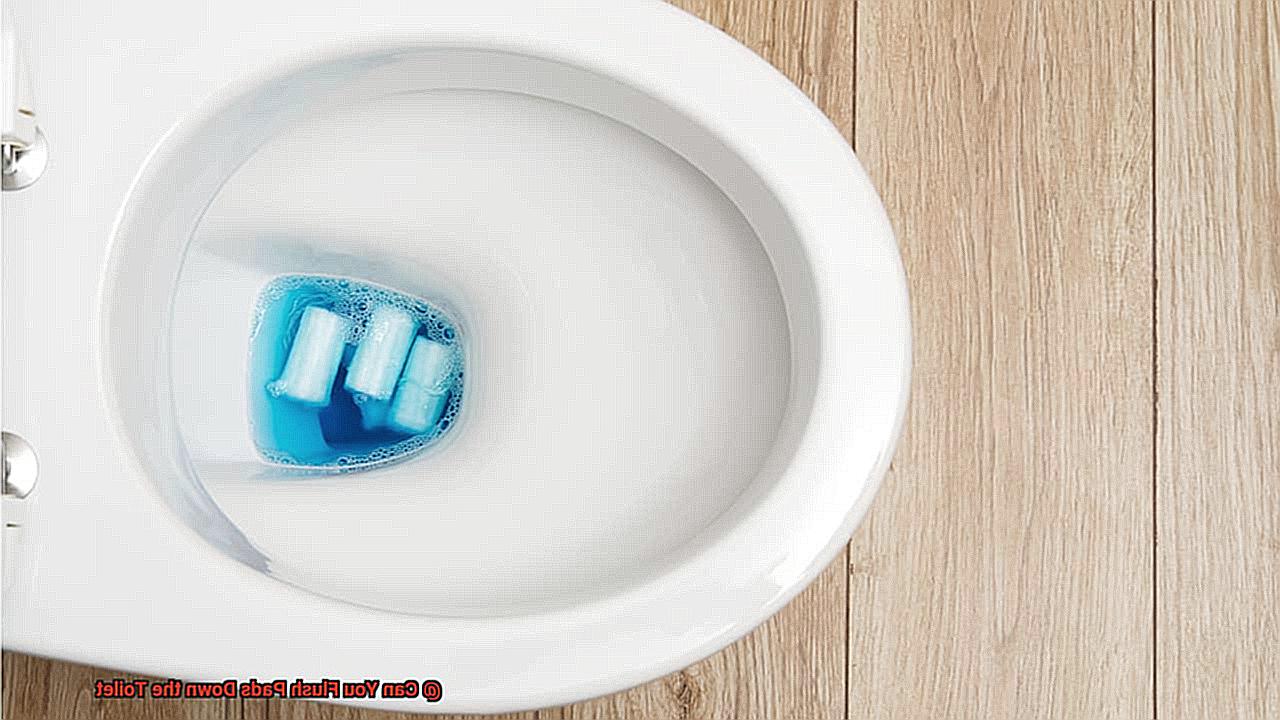
Contents
The Dangers of Flushing Pads Down the Toilet
Ladies, let’s have a quick chat about something that is often overlooked: flushing pads down the toilet. While it may seem like a convenient way to dispose of these products, it can lead to major problems for your plumbing system and the environment.
Firstly, pads are designed to absorb moisture and not meant to be flushed down the toilet. When they are flushed, they can quickly accumulate in pipes and cause blockages that can be difficult and expensive to remove. Nobody wants to deal with a plumbing disaster, so let’s avoid this scenario altogether.
Furthermore, flushing pads down the toilet can harm your plumbing system in other ways. The plastic backing on many pads can get caught in the bends and curves of your pipes, causing them to become misaligned or even break. This can lead to leaks and water damage, which can be a costly headache.
Most importantly, flushing pads down the toilet also poses a severe threat to the environment. These products are made from materials that do not decompose quickly or easily, such as cotton and plastic. When flushed down the toilet, they end up in water bodies like rivers and oceans, where they can negatively impact aquatic life.
It’s time to take action and dispose of pads properly by wrapping them in paper and throwing them in the trash. Alternatively, consider using eco-friendly menstrual products that are biodegradable and won’t harm the environment when disposed of correctly.
Clogging Your Pipes
It may seem like a convenient option, but it can cause serious harm to your plumbing system and the environment.
Pads are designed to absorb liquid, which means they can quickly expand and become bulky when exposed to water. This can lead to blockages in your pipes, causing backed-up toilets and drains. Even if a pad seems small and thin, it’s not safe to flush down the toilet.
What’s more, the adhesive backing and plastic wrapper of pads are not biodegradable, so they can build up in your pipes over time. This can result in costly repairs to fix the damage caused by non-biodegradable materials.
But that’s not all. Flushing pads down the toilet can also harm the environment. Non-biodegradable materials like pads can end up in waterways and harm aquatic life, as well as contribute to pollution.
So what can you do to prevent these problems? Simply dispose of pads properly by wrapping them in paper and placing them in the trash. This small act can have a big impact on preventing potential damage to your plumbing system and the environment.
Damaging Your Plumbing System
Not only is it detrimental to your plumbing system, but it can also have a negative impact on the environment.
Unlike toilet paper, pads are not meant to dissolve quickly in water. This means that flushing them down the toilet can cause serious damage to your pipes, leading to clogs and backups. And let’s be real – no one wants to deal with a backed-up toilet.
But that’s not all. Flushing pads can also wreak havoc on your septic system or municipal sewage treatment plant. If a pad gets stuck in your septic tank, it can cause solids to build up over time and eventually result in a backup or overflow. Similarly, if a pad ends up in a municipal sewage treatment plant, it can cause pipes to clog and equipment to malfunction.
So what can you do? The solution is simple – never flush pads down the toilet. Instead, wrap them in toilet paper or dispose of them in a waste bin. While it may seem like a hassle, taking this small step can save you from costly repairs and prevent potential harm to the environment.
In conclusion, as someone who has seen the consequences of flushing pads down the toilet, I urge you to take care of your plumbing system by avoiding this common mistake. By doing so, you can keep your pipes running smoothly and prevent harmful waste from polluting our planet.
Harming the Environment
One issue that often goes unnoticed is the harm caused by flushing pads down the toilet. While it may seem like a convenient option, it can have severe consequences that harm both our environment and our wallets.
The chemicals released during the decomposition of pads can harm aquatic life and contaminate our water sources. Chemicals like dioxins, furans, and other toxic substances can be released, posing a threat to both wildlife and humans who rely on these water sources. In addition, flushing pads can cause clogs in sewer lines and septic tanks, leading to backups and overflows that can result in costly repairs and damage to homes or businesses.
Not only does flushing pads down the toilet harm our environment, but it can also have financial consequences. Clogs in sewer lines and septic tanks require expensive repairs, while sewage treatment plants must remove non-biodegradable materials like pads from wastewater before releasing it into the environment. This process is both time-consuming and expensive.
It is crucial to dispose of pads properly in the trash or designated sanitary bins to protect our environment and avoid costly repairs. Simple actions like wrapping them in toilet paper or using a reusable menstrual cup can make a significant difference in reducing environmental harm. By educating ourselves and others about the dangers of flushing pads down the toilet, we can work towards a cleaner, more sustainable future.
Alternatives to Flushing Pads Down the Toilet
When it comes to managing our menstrual cycles, we often default to flushing pads down the toilet. However, this method is not only harmful to the environment but also leads to costly repairs. The good news is, there are several safe and environmentally friendly alternatives available.
One option is to wrap the used pad in toilet paper or tissue and place it in a small bag or envelope before throwing it in the trash. This method helps contain any odor and prevents the pad from coming into contact with other items in the garbage. It’s an easy switch, and it reduces waste.
Another fantastic alternative is using menstrual cups or reusable cloth pads. Menstrual cups are made of medical-grade silicone and can be emptied, cleaned, and reused for up to 10 years. They are more comfortable than disposable pads and tampons and eliminate waste. Reusable cloth pads are made of soft, absorbent fabric and can be washed and reused for years as well – they’re just as effective as disposable pads but much kinder to the planet.
It’s also essential to check if your city has programs in place specifically for the disposal of feminine hygiene products. These programs provide special bins or bags that can be used to collect used pads and tampons before they are properly disposed of by city workers.
q9uoIdmJ3H8″ >
Conclusion
In conclusion, flushing pads down the toilet is a big no-no. It may seem like an easy way to dispose of them, but it can lead to disastrous consequences for your plumbing and the environment. Pads are designed to absorb water and expand, which can cause serious blockages in your pipes and sewer systems. And let’s not forget about the plastic backing on many pads that can wreak havoc on your plumbing.
The environmental impact of flushing pads down the toilet is just as concerning. These products contain materials like cotton and plastic that take years to decompose, leading to pollution in our waterways and harm to aquatic life.
To avoid these issues, it’s crucial to dispose of pads properly by wrapping them in paper and tossing them in the trash. Or better yet, consider using eco-friendly menstrual products such as biodegradable pads or menstrual cups that won’t harm the environment when disposed of correctly.
We all have a responsibility to protect our planet, and making small changes like proper pad disposal can make a big difference. By educating ourselves and others about sustainable options for managing our menstrual cycles, we can work towards a cleaner future.

